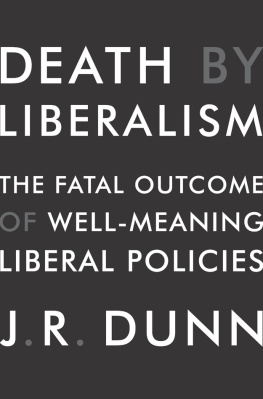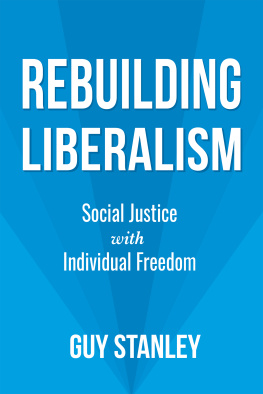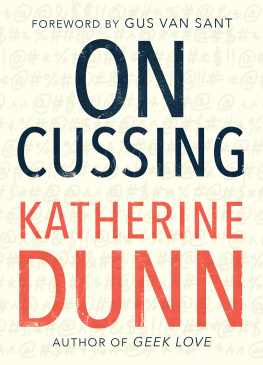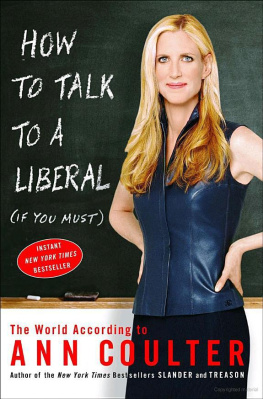L iberalism kills.
If any two-word phrase ever demanded an explanation, its that one. Those words simply do not belong together. They defy all logic, all sense, everything we have ever been taught concerning politics, everything we think we know about how our society functions, everything we understand about Americas civic culture.
To claim that liberalism kills is to say that water burns, that up is down, that ignorance is strength. It is a statement beyond good taste, beyond acceptable argument, almost beyond sanity itself. Whatever its failings and faults, its errors and misjudgments, the high moral stature of liberalism has remained beyond dispute. Liberalism stands as the political expression of humanism, a doctrine epitomizing justice and mercy, the embodiment of human decency in the public sphere. To rank it with killer political dogmas such as communism, Nazism, and fascism is an absurdity, an effort to turn the world inside out.
Liberalism kills... What can that be other than a cry from the political twilight, an expression of terminal hysteria, the last desperate words of someone with nothing left to say? A pure example of the big lie, vicious and feral, fit only to be passed over in silence.
But it is no such thing. It is a statement of fact, derived from the record, easily demonstrated and impossible to refute. It is no metaphor and no mistake. No twists of meaning or redefinition or conceptual gymnastics are required.
Liberalism kills. Its as simple as that. Liberalism destroys lives, and destroys them in large numbers. It kills blatantly, and in ways that can scarcely be traced. It kills both directly and by proxy. Liberalism kills by commissionthrough the promotion of programs and policies that violate the safety and security of the public. Liberalism also kills by omissionby denying citizens the protection they are owed by their government and institutions.
Liberalism kills without respect for class, origins, sex, race, education, or any other factor. Death by liberalism is not limited by any set of personal, social, or political characteristics. Not even adherents of the ideology itself remain immune. Liberalism has eaten its own on numberless occasions, without the victims having any idea how or why they were being destroyed.
Death by liberalism occurs in all fields and at all levels of society. Motorists on the roads, workers at their jobs, women in their homes, children taken under the states protectionall have fallen victim at one time or another. It is implicated in the deaths of hundreds of thousands in this country, while overseas it has contributed to the deaths of millions. It is one of the largest-scale killers active in our time, easily outdoing most deadly diseases, and exceeding terrorism by several orders of magnitude. It has been killing for decades and will continue to kill as long as we allow it.
Liberalism kills for the most part through policy, through courses of action adapted to achieve certain political and social goals. The consequent mortality is neither deliberate nor intentionalbarbed wire and the pistol form no part of liberal methodology. The lethality of liberalism is a malignant example of unintended consequences, a by-product of the doctrines virtues, a result of attempts by its adherents to perfect society and benefit their fellow citizens.
An intractable social or political problem or threat is targeted. It has either gone unaddressed or has defied all previous attempts to solve it. Crime, child abuse, and mental illness can serve as examples. Liberal politicians promise a solution, either through novel technical means, the application of some form of political voodoo not easily comprehensible to the uninitiated, or by otherwise unexplained methods labeled sanity or common sense.
These solutions generally involve the outlay of multiple billions of dollars (read trillions as of 2009), along with the establishment of a mammoth bureaucracy to oversee the process. After years spent in preparation in the form of studies, meetings, consultations, and planning sessions, all of which require trainloads of cash, a solution at last is put into effect. But then...
Then things start going wrong. The new knowledge turns out to be in error, the magic no more than empty ritual, liberal sanity not quite as balanced as was claimed. Soon enough, the problem is worse than it ever was. Its as if it was feeding on the attempts to confront it, gaining strength from all that money and effort being thrown into the battle against it. In response, the departments are enlarged, the budgets expanded, and the effort redoubled. But the problem continues growing, in direct symbiosis with the civil establishment created to overcome it.
In a certain number of cases, people start dying. Dying in larger numbers than they did before government interference started. Dying, often as not, as much due to the effects of that interference as to anything directly associated with the problem itself. These deaths are unplanned and unintended, a form of mass negligent homicide, a kind of soft governmental lethality.
The number of fatalities varies. A few dozen in the case of biodiversity programs, a few thousand in the case of child protection agencies, hundreds of thousands in the case of federal fuel standards and criminal justice reform, and truly celestial numbers when the action is transferred to the international stage.
Almost without exception, so much time has passed that those responsible have moved on. The lethal outcome is disassociated from any form of accountability or guilt. To an onlooker, the catastrophe appears to be the result of accident or bad luck. (This is a major reason why the process has occurred unnoticed. To most people, a societys political system is what it is, to be accepted in the same sense as climate or geology. The effects of many of these policies are of such magnitude as to be difficult to comprehend as the end product of human action.)
Horribly enough, the bureaucratic structures established to oversee these policies continue generating mortality long after failure has become manifest, even after the problem itself has faded from significance. Some of them continue killing to this day.
By this process, mass mortality has become a core element of modern liberalism, a product of its most deep-rooted beliefs and ideas, probably inseparable from the doctrine as it exists, and unlikely ever to be eradicated. To accept liberalism, in its current form, is to accept death on a massive scale.
How did this happen? How did liberalism fall so low? Its not as if it started out as a destructive force, like fascism, communism, and similar ideologies. Liberalism began as an attempt to solve the problem of self-government, an effort to establish a successful democratic system where the ancient Greeks and Renaissance Italians had failed. And to succeed on a much higher levelin the modern context, in societies in which change was the only constant, and not merely as involved city-states, but in polities stretching across entire continents.
The liberalism formulated by Edmund Burke and adapted by our countrys founders was the liberalism of individual rights, economic freedom, and the rule of law.
It had distinct and limited aims: to establish a stable government, to minimize corruption and faction, to secure the governmental succession (a trivial problem to us, but one that stymied previous civilizations for millennia), to assure fair representation, and to protect individual rights, including economic and property rights.











